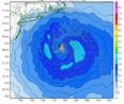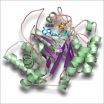(Press-News.org) The debate about using menopausal hormone therapies to relieve symptoms in post-menopausal women has been ongoing. Is the combination therapy of estrogen and progestin better or worse than just giving women estrogen alone? In women who still have a uterus (those who have not had a hysterectomy), progestin counteracts the increased risk of uterus cancer when estrogen is given alone, but at the expense of an increase in breast cancer risk compared to estrogen alone.
Now a study by researchers at UCLA's Jonsson Comprehensive Cancer Center has found that women taking the combination estrogen and progestin menopausal hormone therapy who experienced new onset breast tenderness had a 33 percent greater subsequent risk of developing breast cancer than women who did not experience breast tenderness. In contrast, among women taking estrogen alone, those who experienced new-onset breast tenderness did not have a higher subsequent risk of breast cancer.
"This study showed that developing new breast tenderness after the start of hormone therapy was associated with increased breast cancer risk only in women on the combination estrogen plus progestin therapy, not estrogen therapy alone." said study first author Dr. Carolyn Crandall, a professor of general internal medicine and a scientist with UCLA's Jonsson Comprehensive Cancer Center
The study appears in the Nov. 17, 2011 in the early online edition of the peer-reviewed journal Breast Cancer Research and Treatment.
A previous study by Crandall, published last month, found that the new onset of breast tenderness was much more pronounced after initiation of estrogen and progestin therapy than in women getting estrogen therapy alone. The association between new onset breast tenderness and changes in breast density also was more pronounced in the women getting the combination hormone therapy.
"The consistent theme we've run across throughout these studies is that estrogen and progestin compared to estrogen alone have a more marked effect on breast tissue," Crandall said. "One theory is that there may be more growth of breast tissue, making the breasts more dense, when women take the combination therapy."
Multiple population studies have shown that higher breast density is associated with a higher risk of breast cancer. In women with extremely dense breasts, the cancer risk can be four to six times higher than for women whose breasts are not dense, Crandall said.
Women taking estrogen did have breast tenderness, though not as much as those on the combination therapy, and it clearly didn't signal an increased risk of breast cancer. Crandall cautioned that women taking hormone therapy in general are only at a slight risk for developing breast cancer overall. A previous study estimated that, out of 10,000 women who take combination estrogen plus progestin hormone therapy for one year, eight additional women developed breast cancer than would have normally have been expected to get the disease.
"We don't want to incite panic because breast cancer is rare in women taking hormone therapy, but the point is that women are terrified of getting breast cancer as a result of menopausal hormone therapy," Crandall said. "Where I think this study would be important is for women already on either combination hormone therapy or estrogen alone. If they do develop breast tenderness, it would be good for them to know the results of this study and to consider discussing them with their physician."
Crandall said it's too early to call for an increase in the frequency of clinical breast exams and mammograms in women on hormone therapy based on these studies. However, a woman on hormone therapy who experiences new onset breast tenderness should be vigilant about getting her regular clinical breast exams and mammograms.
One finding in this study was expected, that estrogen and progestin has a greater impact on the breast and that women on the combination therapy had more breast tenderness than women on estrogen alone. What was surprising, Crandall said, was that women taking estrogen alone did have breast tenderness, but that didn't correlate to increased risk of breast cancer.
"It's intriguing to think the same symptom in two sets of women taking different hormone therapies could mean something different," Crandall said.
For this prospective study, Crandall and her team analyzed data from more than 27,337 women enrolled in the Women's Health Initiative (WHI). Of the 27,337 women, 16,608 were on the combination therapy, while 10,739 were taking estrogen alone. Launched in 1991, the WHI consisted of a set of clinical trials and an observational study involving161,808 healthy, postmenopausal women.
"These findings highlight the complexity inherent in the use of surrogate risk markers to assess menopausal hormone therapy-associated breast cancer risk," the study states.
###
The study was funded in part by the Eileen Ogle Award of the Iris Cancer-UCLA Women's Health Center, the National Heart, Lung and Blood Institute, the National Institutes of Health and the U.S. Department of Health and Human Services.
UCLA's Jonsson Comprehensive Cancer Center has more than 240 researchers and clinicians engaged in disease research, prevention, detection, control, treatment and education. One of the nation's largest comprehensive cancer centers, the Jonsson center is dedicated to promoting research and translating basic science into leading-edge clinical studies. In July 2011, the Jonsson Cancer Center was named among the top 10 cancer centers nationwide by U.S. News & World Report, a ranking it has held for 11 of the last 12 years. For more information on the Jonsson Cancer Center, visit our website at http://www.cancer.ucla.edu.
Combo hormone therapy has increased breast cancer risk over estrogen alone
2011-11-21
ELSE PRESS RELEASES FROM THIS DATE:
Recent advance in detonation theory
2011-11-21
A detonation wave is a chemical reaction wave propagating at the velocity of a shock wave along the explosive charge. There is great demand for a detonation model that can accurately simulate the detonation process, which would provide a theoretical basis for highly efficient military destruction, the initiation of an atomic bomb, and calculations relating to the supernova SN Ia explosion. Detonation is complicated in that it involves mechanics, chemistry and thermodynamics simultaneously. The detonation product particles move multi-dimensionally, and there are transport ...
Corals can sense what's coming
2011-11-21
Australian scientists have thrown new light on the mechanism behind the mass death of corals worldwide as the Earth's climate warms.
Coral bleaching, one of the most devastating events affecting coral reefs around the planet, is triggered by rising water temperatures. It occurs when the corals and their symbiotic algae become heat-stressed, and the algae which feed the corals either die or are expelled by the coral.
There have been seven major bleaching events globally in the past 30 years, the most recent being in 2010 across the Indian Ocean and Coral Triangle. Australia's ...
Heart rate recovery predicts clinical worsening in pulmonary hypertension
2011-11-21
Heart rate recovery at one minute after a six-minute walking distance (6MWD) test is highly predictive of clinical worsening and time to clinical worsening in patients with idiopathic pulmonary arterial hypertension (IPAH), according to a new study.
"Ours is the first study to show that heart rate recovery at one minute of rest (HRR1) following a 6MW test is a strong predictor of clinical worsening in IPAH patients," said Omar A. Minai, MD, staff physician in the Department of Pulmonary, Allergy, and Critical Care Medicine at the Cleveland Clinic. "Predicting long-term ...
Metabolic syndrome biomarkers predict lung function impairment after exposure to WTC dust
2011-11-21
Metabolic syndrome biomarkers predict subsequent decline in lung function after particulate exposure, according to new research involving rescue personnel exposed to World Trade Center (WTC) dust.
In a nested case-control study of 327 non-smoking FDNY 9/11 rescue workers, metabolic syndrome biomarkers measured within six months of exposure to WTC dust predicted decline of forced expiratory volume in one second (FEV1) over the next six years.
"Study participants with dyslipidemia, elevated heart rate or elevated leptin levels had a significantly increased risk of developing ...
As probiotics use grows for gut health, VSL#3 has designations for specific GI issues
2011-11-21
GAITHERSBERG, MD, Nov. 18 – As clinical studies continue to validate the use of probiotics to help promote general gastrointestinal health, a growing U.S. market1 for probiotics indicates that the U.S. healthcare community and consumers alike are recognizing the value of these beneficial microorganisms. However, because most probiotics are classified as dietary supplements, directing patients to the best probiotic for their individual needs can be challenging. And, as the category matures, one probiotic preparation -- VSL#3 -- stands apart and ahead because it is not a ...
The protest vote prevails when a landslide victory is expected
2011-11-21
Researchers at the Juan March foundation and the Duke University (USA) have analysed the reason for casting a protest vote as a way of expressing unhappiness with a party during elections. Moderate voters are more likely to vote in this way than those at the extreme left or extreme right of the political spectrum.
Daniel Kselman, researcher at the Juan March Foundation and co-author of the study that analyses such behaviour states that "the protest vote is just a way of expressing discontent. In order for it to be effective, a lot more voters from your party need to vote ...
NRL Monterey develops more accurate tropical cyclone prediction model
2011-11-21
WASHINGTON -- Researchers at the Naval Research Laboratory (NRL) Marine Meteorology Division (MMD), Monterey, Calif., have developed the Coupled Ocean/Atmosphere Mesoscale Prediction System Tropical Cyclone (COAMPS-TC™) model, achieving a significant research milestone in predictions of tropical cyclone intensity and structure.
While the predictions of the paths or tracks of hurricanes, more generally referred to as tropical cyclones (TC), have steadily improved over the last few decades, improvements in the predictions of storm intensity have proven much more difficult.
"Over ...
Protection from severe malaria explained
2011-11-21
Why do people with a hereditary mutation of the red blood pigment hemoglobin (as is the case with sickle-cell anemia prevalent in Africa) not contract severe malaria? Scientists in the group headed by Prof. Michael Lanzer of the Department of Infectious Diseases at Heidelberg University Hospital have now solved this mystery. A degradation product of the altered hemoglobin provides protection from severe malaria. Within the red blood cells infected by the malaria parasite, it blocks the establishment of a trafficking system used by the parasite's special adhesive proteins ...
Chalmers scientists create light from vacuum
2011-11-21
Scientists at Chalmers University of Technology have succeeded in creating light from vacuum – observing an effect first predicted over 40 years ago. The results is published tomorrow (Wednesday) in the journal Nature. In an innovative experiment, the scientists have managed to capture some of the photons that are constantly appearing and disappearing in the vacuum.
The experiment is based on one of the most counterintuitive, yet, one of the most important principles in quantum mechanics: that vacuum is by no means empty nothingness. In fact, the vacuum is full of various ...
Enzymatic synthesis of pyrrolysine, the mysterious 22nd amino acid
2011-11-21
This press release is available in German.
With few exceptions, all known proteins are built up from only twenty amino acids. 25 years ago scientists discovered a 21st amino acid, selenocysteine and ten years ago a 22nd, the pyrrolysine. However, how the cell produces the unusual building block remained a mystery. Now researchers at the Technische Universitaet Muenchen have elucidated the structure of an important enzyme in the production of pyrrolysine. The scientific journal Angewandte Chemie reports on their results in its "Early View" online section.
Proteins ...





